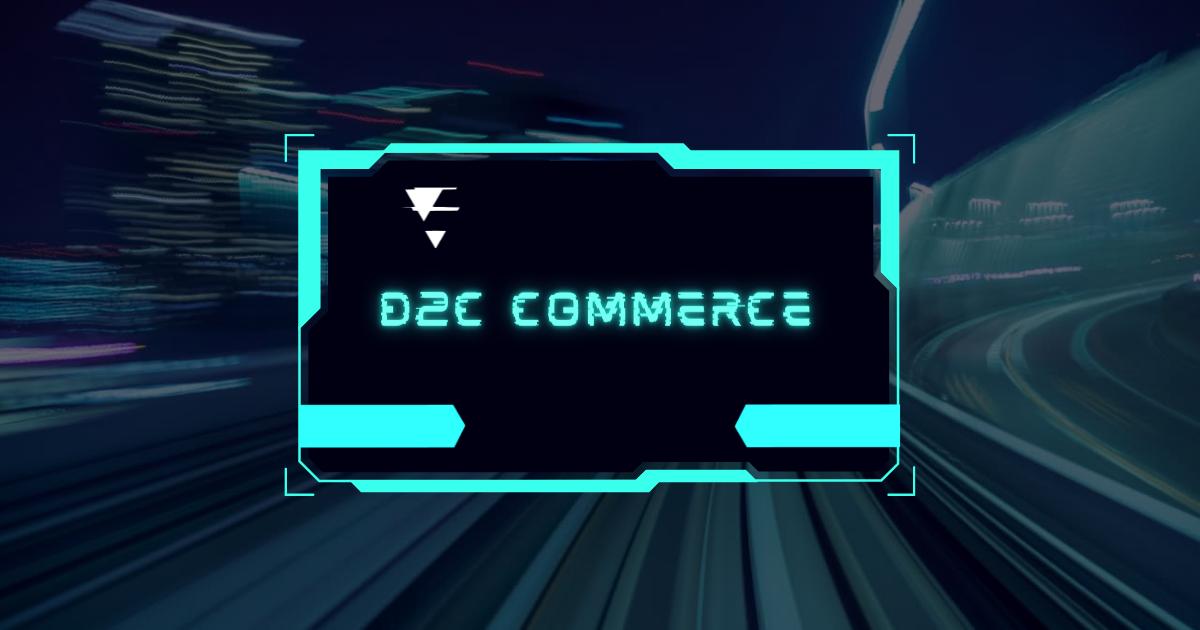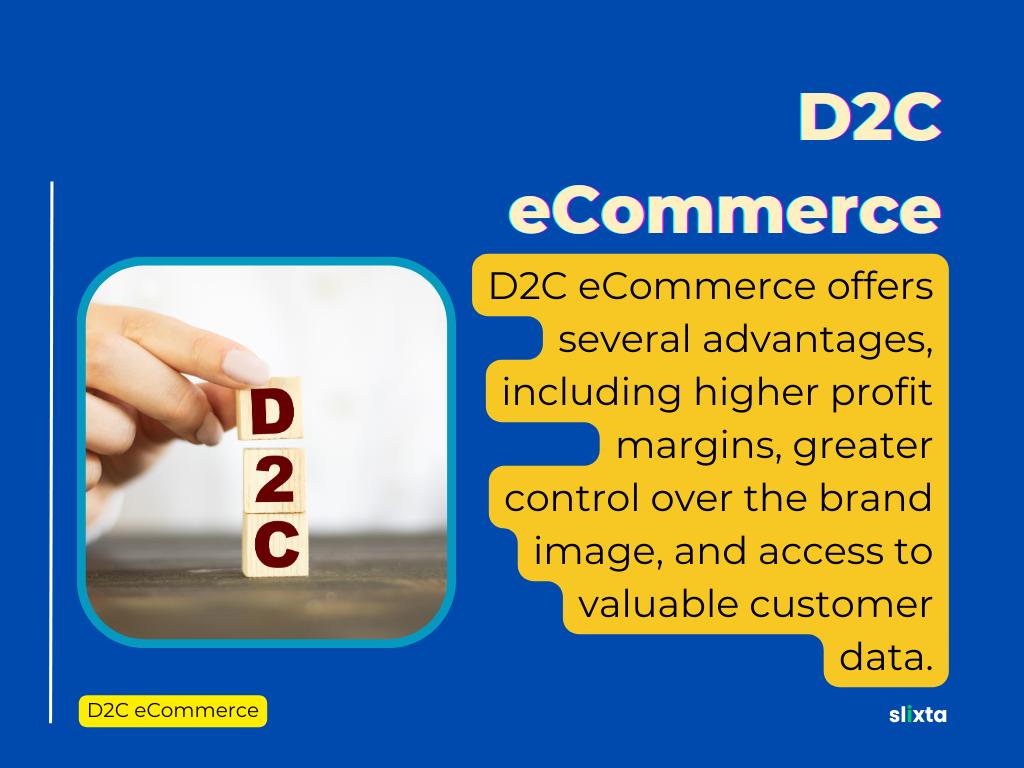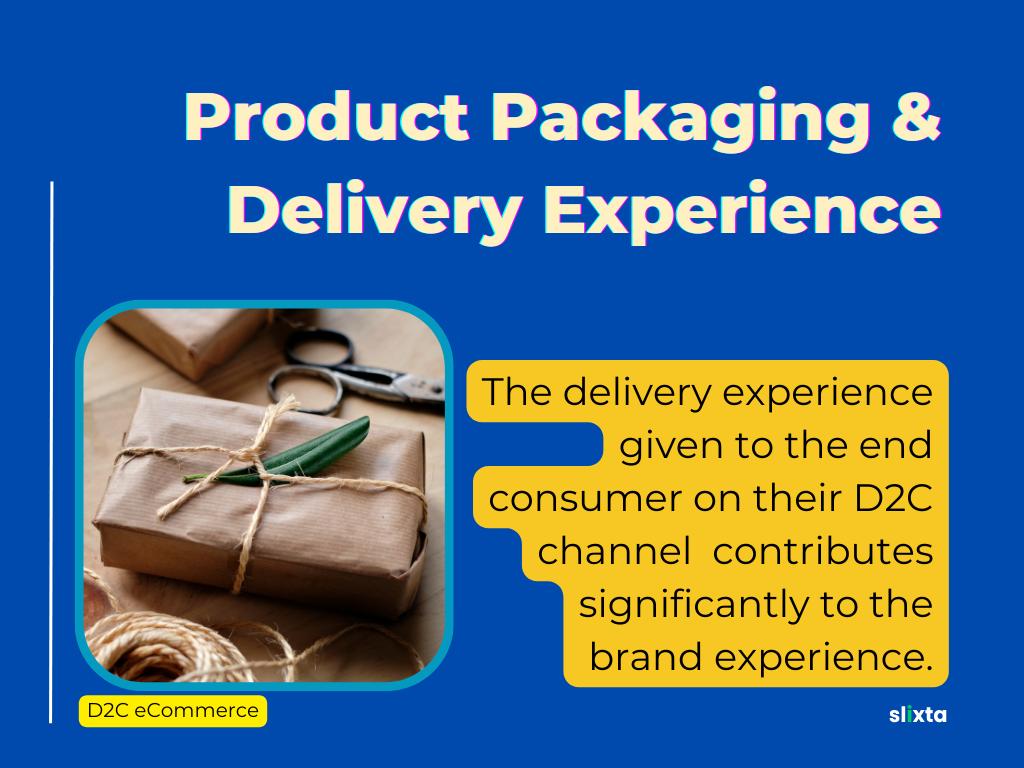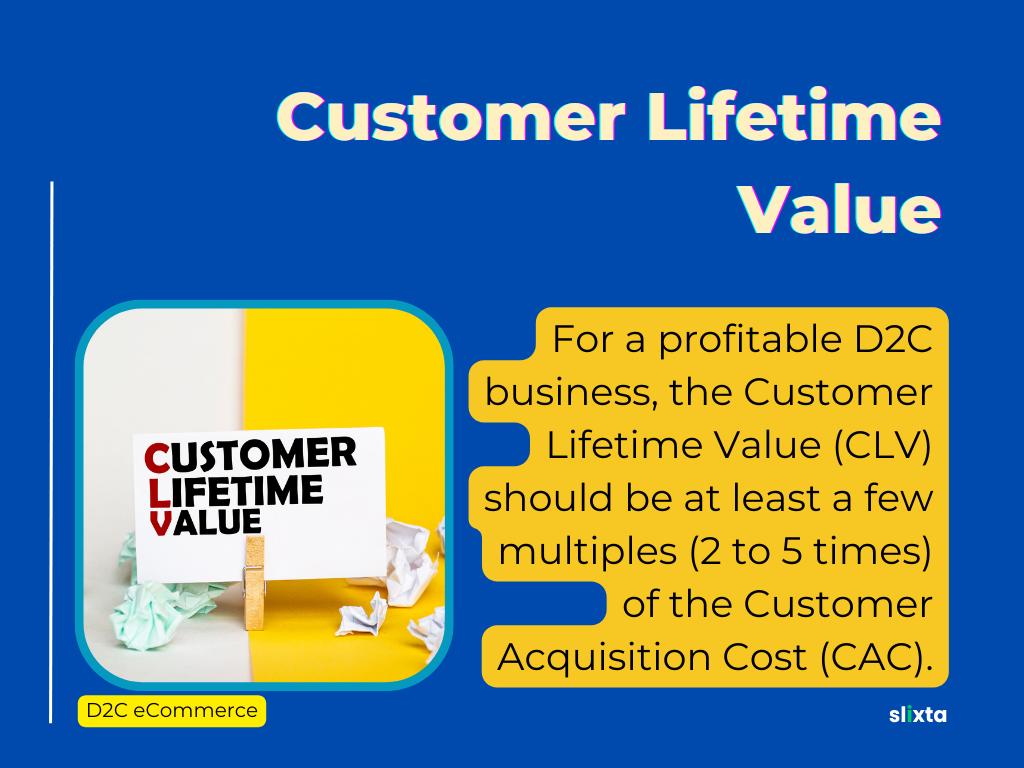
With rapid changes in consumer behaviour, brands are jumping on the D2C eCommerce bandwagon with a never-before sense of urgency. Before embarking on this journey, brands should answer some critical questions and determine their strategy, before investing in tech. "If you build it, he will come" is as much a fallacy for brands as is for startups.
The Role of D2C Channel for Your Brand
There are many reasons for brands to invest in their D2C eCommerce channel. Not all apply equally for every brand. Before venturing into establishing a D2C Channel, brands should clearly identify the specific objectives they would like to accomplish.

- Brand Differentiation and Product Showcase - Brands invest in building amazing websites and apps to help differentiate from their competitors. They put in great efforts to catalog and showcase their products in vivid detail. The objective is to influence and sway the consumer buying decision, both during online and offline purchases.
- Incremental Sales - D2C eCommerce platform can be a source for incremental sales. Not surprisingly, many brands have this as the core focus of the D2C strategy.
- Overcome Marketplace Restrictions - Brands experience many restrictions on marketplaces; typically, this could be restrictions on order quantities, order value, packaging etc. On a brand's own website, the brand has total freedom and flexibility to experiment on parameters that can help acquire and retain consumers.
- Avoid Marketplace Competition - To overcome operational challenges related to technology, inventory and delivery, some brands use marketplaces as their only direct consumer channel. This leaves them open to competition from competitor brands who jockey for positioning through paid sponsorships and could ultimately result in losing out the customer to the competitor.
- Breakout of Geographical Constraints - While it may not be viable for brands to establish a traditional distributor/retailer network across geographies and at scale, the D2C channel allows brands to focus on individual customer personas spanning geographies, reach them through digital channels and establish a long-standing customer relationship.
- Better Profitability - A brand that has nailed the D2C eCommerce execution can achieve significantly higher profitability compared to traditional channels and marketplaces.
- Improved Cashflow - For most brands, sales through distributors and retailers involve offering 30, 60 or 90 credit for stocks being maintained by the distributors and retailers. This is a significant bottleneck for brands looking to scale up. The D2C channel allows brands to receive payment prior to shipping products to customers; thus significantly lowering the cashflow requirements.
- Customer Loyalty - D2C channel offers multiple avenues to build customer loyalty, through subscriptions, loyalty programs etc.
- Customer Insights - The ability to interact with customers directly allows brands to better understand customer behaviour and preferences. In today's world of constant innovation, these insights are invaluable.
Product Packaging & Delivery Experience
The D2C channel requires brands to operate differently with respect to packaging and deliveries.
For sales through retail & distributor networks, products have been traditionally transported in larger quantities (through own/leased commercial trucks) and in bulk packaging (typically boxes, cartons etc.) to distributors and retailers. The D2C eCommerce channel handling of consumers orders in smaller quantities (typically a few retail packs, of multiple different products).

For many brands, this may require significant effort in reworking retail packaging. The packaging has to be robust enough for shipment through courier services like FedEx, DHL and through local, last-mile delivery services. Some brands look at this as an opportunity to bring out a D2C centric packaging that can be a real unboxing experience for the consumer.
Brands also need to realise that the delivery experience given to the end consumer on their D2C channel also contributes significantly to the brand experience. This is quite unlike the traditional bulk transportation for distributor and retailer orders. A D2C juice brand includes a handwritten note by its founder with every delivery specifically addressing each customer by their name.
To stay ahead of competitors, brands need to think beyond omnichannel packaging when incorporating a D2C strategy.
Customer Lifetime Value
For a profitable D2C business, the Customer Lifetime Value (CLV) should be at least a few multiples (2 to 5 times) of the Customer Acquisition Cost (CAC). For some brands, the CLV is the value of a single purchase (e.g. a sofa) For some others, the CLV is the value of repeated purchases of multiple different products (e.g. cosmetics, health foods etc.).
The CAC in D2C eCommerce is typically higher compared to retail channels. Brands need to figure out the right strategies to achieve significant CLV; prior to scaling up D2C marketing.

Investing in the consumer journey, from product discovery to unboxing, is key to retaining consumers and building up CLV. The brand website (and apps) play a very important role in building a strong, direct consumer relationship.
Not surprisingly, brands that create wow experiences on their D2C eCommerce website on product experience pages, on reorders and have a simple checkout process have significantly high consumer retention. Keeping Product FAQs & usage tips up-to-date and including lots of valuable content (just like we do here in this article) are simple but effective ways of keeping your consumers engaged on your website and apps.
Investing in Technology for D2C eCommerce
In today's world of DIY SaaS-driven eCommerce (there are platforms that claim to be hosting more than a million merchants), major brands need to ensure that the eCommerce platform they roll out reflects their brand equity.

It's essential for major brands to carefully select the technology for their D2C channel. With the proliferation of DIY SaaS-driven eCommerce platforms, it's crucial to choose a technology that aligns with the brand's identity and objectives.
Choosing the Right D2C eCommerce Platform
Selecting the right D2C eCommerce platform is a critical decision that will have a profound impact on your brand's success in the direct-to-consumer arena. Here are some key considerations to keep in mind:
Scalability
You should opt for a platform that can grow with your brand. As your D2C channel expands, your platform should be able to handle increased traffic, more products, and evolving customer needs. Scalability is crucial to accommodate your brand's growth without the need for frequent platform changes.
- Why: You need a platform that can adapt and scale along with your brand's growth.
Customization
Your brand is unique, and your D2C platform should reflect that. Look for a platform that offers a high degree of customization, allowing you to tailor the user experience to match your brand's identity and customer expectations.
- Why: To stand out from the competition and deliver a personalized experience that resonates with your target audience.
User-Friendly Interface
Your D2C platform should be user-friendly not only for your customers but also for your team. An intuitive interface makes it easier for your staff to manage the platform, update content, and analyze performance metrics.
- Why: A user-friendly platform simplifies daily operations, reduces training time, and allows you to make real-time updates.
Security and Compliance
Security is paramount in the world of eCommerce. Your platform should adhere to the highest security standards to protect customer data and transactions. It's also crucial to ensure that the platform complies with data protection regulations in your target markets.
- Why: Security breaches can lead to reputational damage and legal consequences. Compliance is essential to avoid regulatory issues.
Integration Capabilities
Your D2C platform should seamlessly integrate with other tools and systems you use, such as customer relationship management (CRM) software, inventory management systems, and analytics platforms. Integration streamlines operations and provides valuable insights.
- Why: Integrated systems enhance efficiency and provide a comprehensive view of your business.
Mobile Responsiveness
In today's mobile-centric world, your D2C platform must be responsive and mobile-friendly. A large portion of your customers will access your site via mobile devices, and a poor mobile experience can drive potential customers away.
- Why: Mobile responsiveness ensures that you capture and retain a broader audience.
Analytics and Reporting
Data is the lifeblood of eCommerce. Your platform should offer robust analytics and reporting capabilities to help you track key performance indicators, understand customer behavior, and make data-driven decisions.
- Why: In-depth analytics empower you to optimize your marketing, product offerings, and user experience.
Payment and Shipping Options
Your platform should support a wide range of payment methods and shipping options to cater to diverse customer preferences. A flexible approach to payments and shipping can attract and retain more customers.
- Why: Offering convenience in payment and shipping leads to higher conversion rates and customer satisfaction.
Content Management
The ability to manage and update content easily is crucial for keeping your website fresh and engaging. Your platform should have user-friendly content management tools.
- Why: Regular content updates are essential for SEO and providing relevant information to customers.
Data Management and Customer Insights
To make informed decisions and tailor your D2C strategy effectively, you need to leverage data and customer insights. Here's how you can do that:
Data Collection
Collecting the right data is the first step. This includes not only customer data but also website traffic data, sales data, and user behavior data. Ensure that your platform has the capability to gather and store this information securely.
- Why: Data collection is the foundation of data-driven decision-making.
Data Analysis
Once you have the data, you need tools to analyze it effectively. Look for platforms that provide built-in analytics or easy integration with third-party analytics tools.
- Why: Data analysis uncovers trends, patterns, and opportunities that can inform your strategy.
Customer Segmentation
Segmenting your customers based on demographics, behavior, and preferences allows you to target them with personalized marketing and product recommendations.
- Why: Personalized marketing increases engagement and conversions.
Automation
Automation tools can streamline your marketing efforts. Consider platforms that offer email marketing automation, chatbots, and personalized product recommendations.
- Why: Automation saves time and ensures consistent communication with customers.
A/B Testing
To optimize your website and marketing campaigns, you should be able to conduct A/B tests easily. This involves testing different elements to determine which performs better.
- Why: A/B testing helps you improve your website's conversion rate and marketing effectiveness.
Customer Support and Engagement
Excellent customer support is a cornerstone of a successful D2C channel. Here's what you need to consider:
Multi-Channel Support
Customers expect to reach you through various channels, including live chat, email, phone, and social media. Your platform should facilitate multi-channel support.
- Why: Multi-channel support ensures you can connect with customers wherever they are most comfortable.
Self-Service Options
Providing self-service options like a comprehensive FAQ section and knowledge base can help customers find answers to their questions quickly.
- Why: Self-service options reduce the workload on your support team and enhance customer satisfaction.
Personalization
Your platform should support personalization, allowing you to address customers by name, recommend products based on their preferences, and tailor marketing messages.
- Why: Personalization increases customer engagement and conversion rates.
Marketing and Promotion
Your D2C platform should facilitate marketing and promotion activities to attract and retain customers. Here are some key considerations:
SEO-Friendly
Your website should be optimized for search engines to ensure it appears in relevant search results.
- Why: SEO is essential for driving organic traffic and increasing brand visibility.
Email Marketing
Your platform should have built-in email marketing capabilities, including list management, automated campaigns, and tracking.
- Why: Email marketing is a powerful tool for customer retention and re-engagement.
Social Media Integration
Integration with social media platforms allows you to promote your products and engage with your audience where they spend their time.
- Why: Social media is a vital channel for brand building and customer interaction.
Discounts and Promotions
Your platform should support the creation and management of discounts, coupons, and promotions.
- Why: Discounts and promotions can drive sales and customer loyalty.
Conclusion
Investing in technology for your D2C eCommerce channel is a strategic decision that requires careful consideration. The right platform, coupled with effective data management, customer support, and marketing strategies, can set you on the path to D2C success. By addressing these crucial aspects, you'll not only create a strong foundation for your D2C journey but also ensure that your brand stands out in the fast-paced and competitive digital marketplace.
Remember that your choice of technology should align with your brand's identity, goals, and customer expectations. It's an investment in the future of your brand, and the decisions you make today will influence your success in the dynamic world of D2C eCommerce.
So, before you embark on your D2C journey, take the time to answer these important questions and make informed choices about the technology that will drive your brand forward in the D2C space. Your success in the D2C realm starts with careful planning and the right technology.
Some Frequently Asked Questions (FAQs) Related to D2C eCommerce and Technology Investments
What is D2C eCommerce, and how does it differ from traditional eCommerce?
- D2C eCommerce stands for Direct-to-Consumer eCommerce. It involves brands selling their products directly to customers through their own online channels, bypassing intermediaries like retailers or distributors. Traditional eCommerce may involve selling through third-party marketplaces.
Why should my brand consider investing in a D2C channel?
- Investing in a D2C channel allows your brand to establish a direct connection with your customers, enabling better control, brand differentiation, increased profitability, and the opportunity to gather valuable customer insights.
What technology is essential for a successful D2C eCommerce venture?
- The technology stack for D2C eCommerce includes a robust eCommerce platform, data analytics tools, customer relationship management (CRM) software, marketing automation, and a user-friendly website or app.
How can I choose the right D2C eCommerce platform for my brand?
- Consider factors like scalability, customization options, user-friendliness, security, integration capabilities, mobile responsiveness, analytics, payment, and shipping support, as well as content management.
What is Customer Lifetime Value (CLV), and why is it important in D2C eCommerce?
- CLV is the total revenue a brand can expect from a single customer over their entire relationship. It's crucial in D2C eCommerce because it helps gauge the long-term profitability of acquiring and retaining customers.
How can I leverage data and customer insights in my D2C strategy?
- To utilize data effectively, collect relevant data, analyze it to identify trends, segment your customers, use automation for personalization, and conduct A/B testing to optimize your strategies.
What role does customer support play in D2C eCommerce, and how can I enhance it?
- Excellent customer support is vital in D2C eCommerce. You can improve it by offering multi-channel support, self-service options, and personalization to provide a better customer experience.
What are some effective marketing and promotion strategies for D2C eCommerce?
- Consider strategies like SEO optimization, email marketing, social media integration, and offering discounts and promotions to attract and retain customers.
How do I ensure my D2C technology investment aligns with my brand's identity and goals?
- Before investing, define your D2C objectives clearly. Ensure that the technology you choose reflects your brand's equity and supports your goals.
Is D2C eCommerce only suitable for well-established brands, or can startups benefit from it as well?
- D2C eCommerce can benefit both well-established brands and startups. It provides a platform for startups to build their brand identity from scratch and reach a global audience.
